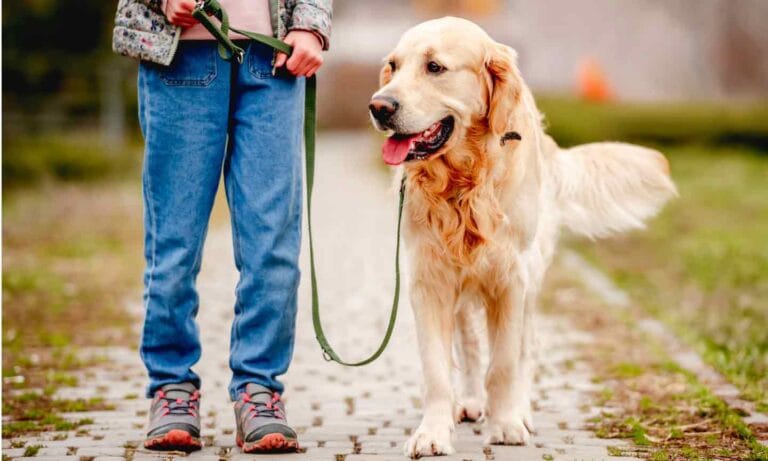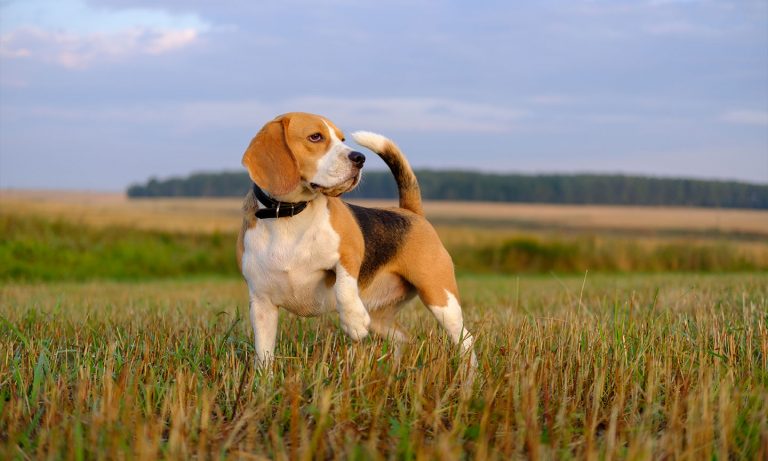In comparison with a human’s lifespan, our four-legged friends don’t get nearly as much time as we’d like them to. There are, however, some breeds that tend to live longer than others. According to Emmy-award winning veterinarian Dr. Jeff Werber, when it comes to determining how long a certain breed may live, the smaller the dog the more likely it is to live longer, with may small breeds living well beyond 14 years. Learn more about long-living dog breeds, the health conditions that may affect them and how to keep your dog healthy through his senior years, here.)
Chihuahua

Dennis Jacobsen via Shutterstock
A sassy breed with a delicate build and large, round eyes, the Chihuahua can live up to 18 years. Similarly to humans, much of the aging process is impacted by how much strain is put on a dog’s body, Werber said, and smaller breeds like the Chihuahua may not have as much physical strain as a larger breed. Assuming that they don’t experience any major disease or accidents and are able to live a normal, happy life, small breeds comfortably live to at least 14 years old, Werber said. Chihuahuas require little exercise beyond a short daily walk and are extremely devoted to their people. Health conditions commonly seen in the breed can include patellar luxation and some heart problems.
Maltese

DragoNika via Shutterstock
An ancient Mediterranean breed that may have descended from the Bichon Frisé, the Maltese has a lifespan of up to 14 years. According to Werber, breeds that are historically older and have been mixed with similarly sized dogs (like the Maltese) have also been known to live longer. Affectionate and gentle, the Maltese is a lively and fearless breed despite its small size. The breed is prone to health issues including patellar luxation and hydrocephalus, a buildup of fluid inside the skull that can lead to brain swelling.
Pomeranian

Sergey Lavrentev via Shutterstock
The smallest member of the Spitz family, the Pomeranian has been a popular companion dog for centuries and has a large-dog personality similar to its ancestors. Like humans, dogs with a history good genes and a healthy lifestyle tend to have a longer lifespan, Werber said. Though they are small, Pomeranians do well with plenty of stimulation including indoor games and daily walks. With a lifespan of up to 16 years, Pomeranians may suffer from minor health conditions including hypoglycemia (low blood sugar) and shoulder luxation.
Yorkshire Terrier

Birute Vijeikiene via Shutterstock
Another breed with a big personality in a small package, Yorkshire terriers are brave, inquisitive and energetic. Small and delicate in build, Yorkies can live up to 16 years and are prone to patellar luxation and Legg-Calve-Perthes disease. To help identify some of these health issues, your veterinarian may run knee and hip tests on your dog.
Shetland Sheepdog
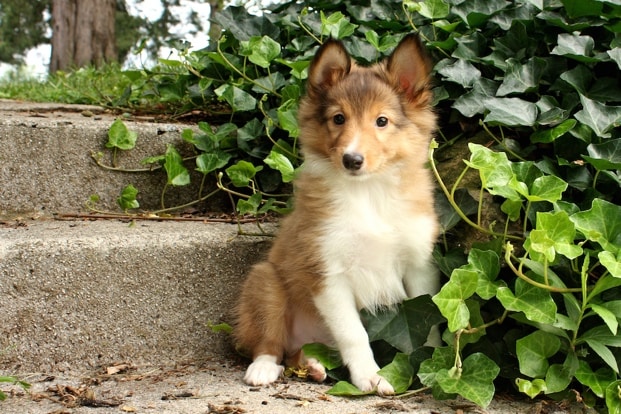
Erica Sauder via Shutterstock
A medium-sized breed that shares some genetic traits with the Collie—in addition to its looks—the Shetland Sheepdog is a working breed that enjoys being with its people and is very loyal. With a lifespan of 12 to 14 years, Werber said that as dog breeds go up in size, their lifespan generally drops a year or two. Friendly and well behaved, the Shetland Sheepdog may be prone to allergies, canine hip dysplasia and patellar luxation.
Papillon
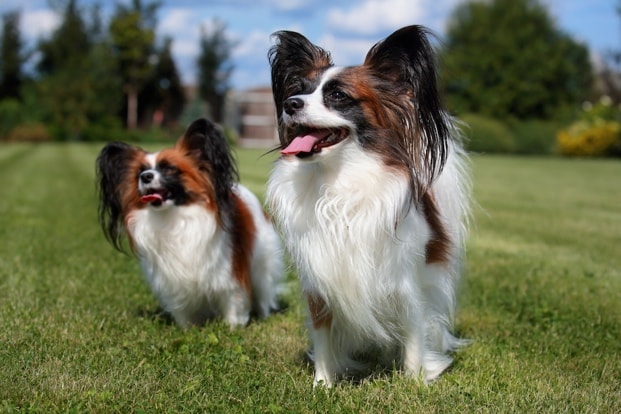
Degtyaryov Andrey via Shutterstock
Friendly and affectionate, the Papillon loves attention and has been a popular companion dog since its development in France in the 17th century. Known for its intelligence, Papillons are among the most responsive and obedient toy breeds. With a lifespan of up to 15 years, the Papillon may be prone to some dental problems and patellar luxation. Among good overall health, another key to ensuring your dog lives a long, happy life is good dental health, Werber said.
“It’s amazing how people ignore the oral health of their dog and the effect it can have on the body,” Werber said. “Regular dental care and checkups are critical.”
Lhasa Apso
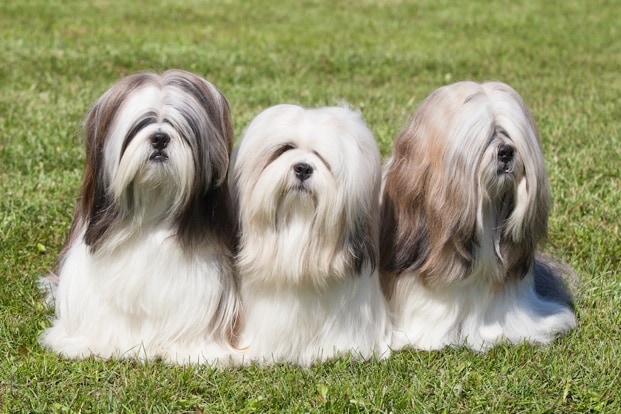
VKarlov via Shutterstock
An independent dog known for it’s bold personality in spite of its small size, the Lhasa Apso is believed to be an ancient dog breed. Reserved towards strangers and sometimes stubborn, Lhasa Apsos are lovable towards their owners and make loyal companions. With a lifespan of 12 to 14 years, the breed may be prone to patellar luxation and retinal atrophy.
Shih Tzu
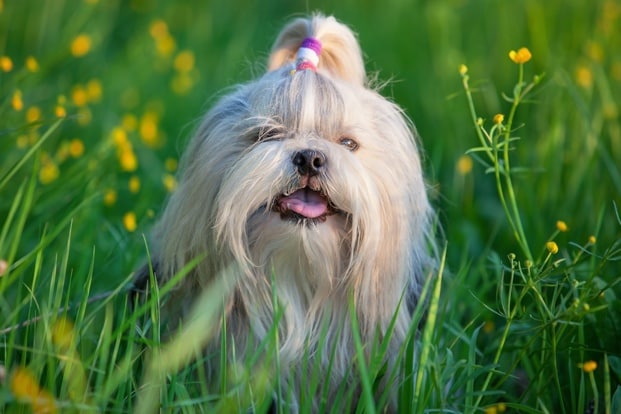
Chaoss via Shutterstock
One of the most ancient dog breeds, Shih Tzus were kept as pets by Chinese royalty for centuries. A wonderful companion and house pet, the Shih Tzu is lively, alert and friendly and requires minimal exercise beyond short daily walks. Though they are generally easy keepers, the Shih Tzu does need regular coat maintenance and grooming. With a lifespan of up to 16 years, the breed can be prone to progressive retinal atrophy.
Beagle

Ross Stevenson via Shutterstock
A gentle and friendly breed that has been used as a hunting dog since the 1500s, the Beagle, like most medium sized dogs according to Werber, can usually live to at least 13 years old with a healthy lifestyle. A breed that can do well in either the city or country, it requires more exercise than the smaller breeds on this list and does best with access to a yard or fenced in area. While the breed is known for being generally healthy, Beagles can be prone to glaucoma, epilepsy and patellar luxation.
Vizsla

Fotografos via Shutterstock
With a lightweight, muscular body and beautiful golden rust-colored coat, the Vizsla is another medium sized breed that can live up to 14 years. Energetic, sensitive and gentle, Vizslas love human companionship and are known for their speed and agility in the field. The breed may be prone to hypothyroidism, canine hip dysplasia and epilepsy.
Looking to help your dog live a long, happy life? Werber recommends ensuring your dog’s emotional and physical health by giving them plenty of exercise outside the home and stimulation and attention inside the home. As genetics play a part in the lifespan of your breed, its important to research the history of your dog and learn about any conditions, cancers or problems they may be predisposed to. Learning about the history of your dog’s parents can help, too.
“Good breeders will happily share the history of your dog’s parents with you,” Werber said. “Check the eyes, hips, elbows and hearts of the parents and work towards providing ideal care to prevent the onset of certain diseases. Learn as much as you can about your breed and figure out what can be age-enhancing and extending.”
If you’re looking for one of the breeds on this list, make sure to check in with local shelters and rescue groups. Many of these breeds (and mixes of these breeds) need loving homes to live out their long lives. It’s important to keep in mind that any dog—including mixed breeds and shelter dogs—can live a long, healthy life if they’re given the proper care and attention.

Jessica spends her days trying not to helicopter parent her beloved shelter pup, Darwin.
Share:






